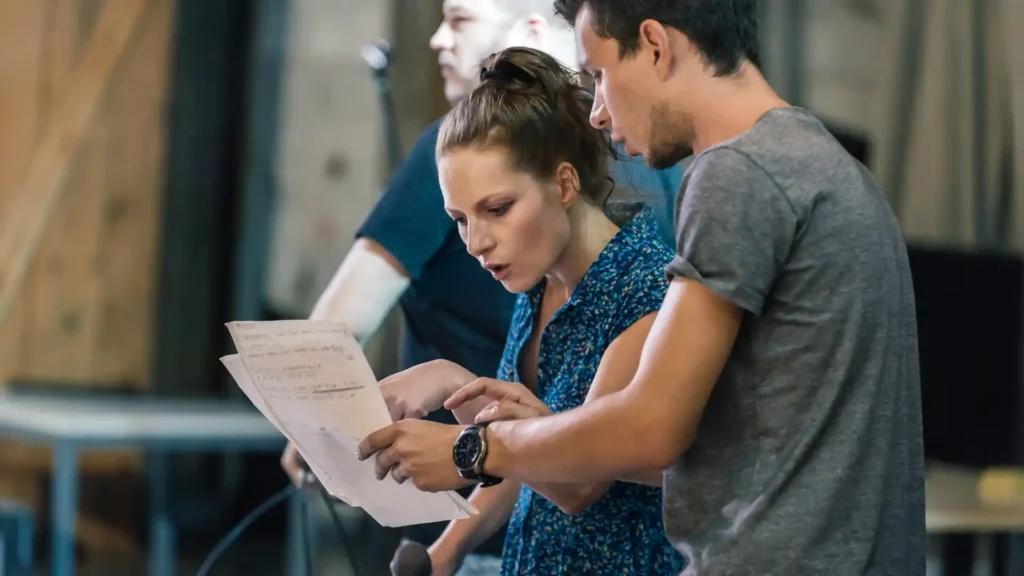Writing a film script is a creative process that involves crafting a compelling story, developing engaging characters, and structuring scenes to captivate audiences. Whether you’re a seasoned screenwriter or a novice looking to embark on your first scriptwriting journey, mastering the art of writing a film script is essential to bring your cinematic vision to life.
Concept Development
Before diving into the actual scriptwriting process, it’s crucial to develop a strong concept for your film. This involves brainstorming ideas, exploring themes, and identifying the core message you want to convey through your story. A well-developed concept serves as the foundation for your script and guides the narrative direction.
Character Creation
Characters are the heart of any film script, driving the story forward and engaging the audience. When creating characters for your script, focus on developing complex personalities, motivations, and arcs that resonate with viewers. Each character should have distinct traits, goals, and conflicts to add depth and authenticity to your story.
Plot Structure
A well-crafted plot structure is essential for keeping your audience engaged from beginning to end. Consider the three-act structure commonly used in screenwriting, where the setup, confrontation, and resolution form the backbone of your script. Develop a compelling narrative arc with rising tension, climactic moments, and satisfying resolutions.
Dialogue Writing
Dialogue plays a crucial role in conveying emotions, relationships, and character dynamics in a film script. Write authentic and impactful dialogue that reveals character traits, advances the plot, and captures the essence of each scene. Pay attention to subtext, tone, and pacing to create compelling conversations that resonate with viewers.
Scene Descriptions
Detailed scene descriptions help set the tone, atmosphere, and visual imagery of your script. Paint a vivid picture with your words, describing locations, actions, and emotions to immerse readers in the world of your story. Use concise and evocative language to create a cinematic experience on the page.
Visual Storytelling
Visual storytelling is a key aspect of writing a film script, as it dictates how the story will unfold on screen. Think visually when crafting your scenes, incorporating visual cues, symbolism, and imagery to enhance the narrative. Consider camera angles, lighting, and mise-en-scène to convey mood and enhance storytelling.
Pacing and Structure
Effective pacing and structure are essential for maintaining the momentum and flow of your script. Balance moments of tension and release, action and reflection, to keep the audience engaged throughout the story. Experiment with nonlinear storytelling, flashbacks, or parallel narratives to add complexity and intrigue to your script.
Feedback and Revision
Seeking feedback from peers, mentors, or script consultants is a valuable step in the scriptwriting process. Constructive feedback can provide fresh perspectives, identify areas for improvement, and help refine your script to its full potential. Embrace revision as a necessary part of the creative process to polish your work and make it shine.
Industry Insights
Familiarize yourself with industry trends, genres, and audience preferences to tailor your script for commercial success. Research the market, study successful films, and stay informed about emerging storytelling techniques to position your script for industry recognition and appeal.
Professional Development
Continuous learning and skill development are essential for aspiring screenwriters. Consider enrolling in a reputable screenwriting program, such as those offered by Yellowbrick, to enhance your craft, receive expert guidance, and network with industry professionals. Investing in your education and training can open doors to new opportunities and elevate your screenwriting career.
Conclusion
Writing a film script is a challenging yet rewarding endeavor that requires creativity, dedication, and a deep understanding of storytelling principles. By honing your craft, refining your skills, and staying true to your artistic vision, you can create compelling scripts that resonate with audiences and bring your cinematic dreams to life.
Key Takeaways:
- Writing a film script combines creativity, storytelling, and structure to bring cinematic ideas to life.
- Develop a strong concept that defines your film’s core message and narrative direction.
- Create complex, believable characters with clear motivations and arcs.
- Build a solid plot using the three-act structure: setup, confrontation, and resolution.
- Write authentic dialogue that reveals character and advances the story.
- Use vivid scene descriptions and visual storytelling to make the script cinematic.
- Maintain good pacing and structure to keep audiences engaged.
- Seek feedback and revise to refine and strengthen your script.
- Stay informed on industry trends and audience preferences.
- Continue learning and improving your craft through education and professional development.
For those looking to enhance their screenwriting skills further, consider exploring the NYU Modern Screenwriting online course and certificate program. Elevate your storytelling abilities and unlock new opportunities with Yellowbrick.







